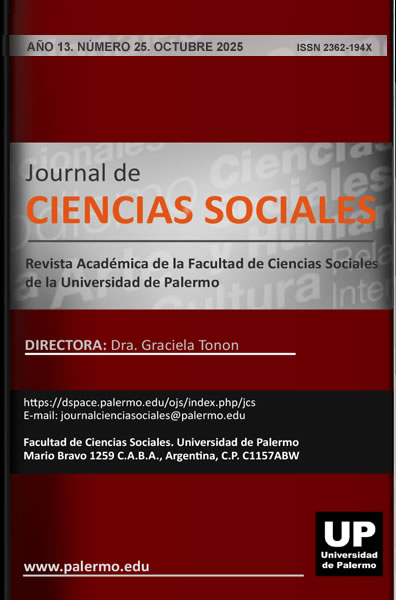The Prominence of Generative Artificial Intelligence: A Techno-Sociocultural Perspective on the Need for Otherness
Abstract
The advancement of generative Artificial Intelligence has sparked a debate about its impact on society, culture, and human communication. This article proposes a technosociocultural analysis of this technology, avoiding deterministic views and highlighting its integration into the social structure. From an interdisciplinary perspective, it explores the relationships between technology, culture, and communication based on theoretical references from authors such as Eco, Geertz, Castells, and McLuhan. It argues that generative AI, far from being an autonomous entity, is part of the human cultural and communicative fabric, redefining interaction with otherness. The final reflection suggests that the real challenge is not only the advancement of AI, but the potential loss of human protagonism and control over the creation, interpretation, and transmission of cultural symbols — a fundamental aspect in the construction of subjectivities and collective identity.
Downloads
References
Albarello, F. (2017). Del contenido al flujo: nuevas relaciones entre medios y usuarios en el ecosistema digital. En C. Labate y C. Arrueta (Eds.), La comunicación digital. Redes sociales, nuevas audiencias y convergencia: desafíos y oportunidades para la industria, el Estado y los usuarios (pp. 219- 230). Editorial de la Universidad Nacional de Jujuy.
Boczkowski, P. y Mitchelstein, E. (2022). El entorno digital. Breve manual para entender cómo vivimos, aprendemos, trabajamos y pasamos el tiempo libre hoy. Siglo XXI Editores.
Borgmann, A. (2005). La tecnología y la búsqueda de la felicidad. Revista Iberoamericana de Ciencia, Tecnología y Sociedad, 2(5), 81-93 https://www.revistacts.net/wp-content/uploads/2020/01/vol2-nro5-doss02.pdf
Burbules, N. y Callister, T. (2001). Educación: riesgos y promesas de las nuevas tecnologías de la información. Ediciones Granica.
Castells, M. (2009). Comunicación y poder. Alianza Editorial
Eco, U. (1968). Apocalípticos e integrados. Editorial Lumen.
Freud, S. (1992). Obras Completas. El porvenir de una ilusión, El malestar en la cultura y otras obras. Amorrortu Editores.
Fidler, R. (1998) Mediamorfosis. Comprender los nuevos medios. Ediciones Granica.
Future of Life Institute. (2023, marzo). Pausar experimentos gigantes de IA: una carta abierta. Future of Life Institute. https://futureoflife.org/open-letter/pause-giant-ai-experiments/
Geertz, C. (2003). La Interpretación de las culturas. Gedisa.
Jenkins, H. (2006). Convergence Culture. La cultura de la convergencia de los medios de comunicación. Paidós.
McKinsey & Company. (2024). Implementing generative AI with speed and safety. McKinsey & Company. https://www.mckinsey.com/capabilities/risk-and-resilience/our-insights/implementing-generative-ai-with-speed-and-safety
McLuhan, M. (1996). Comprender los medios de comunicación. Las extensiones del ser humano. Paidós.
Ong, W. (2017). Oralidad y escritura. Tecnologías de la palabra. Siglo XXI Editores.
Sartre, J. P. (2008). El Ser y la Nada. Losada.
Scolari, C. (2015). Ecología de los medios. Entornos, evoluciones e interpretaciones. Paidós.
Watzlawick, P., Bavelas, J. y Jackson, D. (1991). Teoría de la Comunicación Humana. Ediciones Herder.
The authors retain the rights to their work guaranteeing this journal the right of first publication, committing to cite the Journal of Social Sciences as a reference of the original publication.
The works published in the Journal are published under the terms indicated in the Creative Commons License with the International Attribution 4.0 (CC BY 4.0).




























